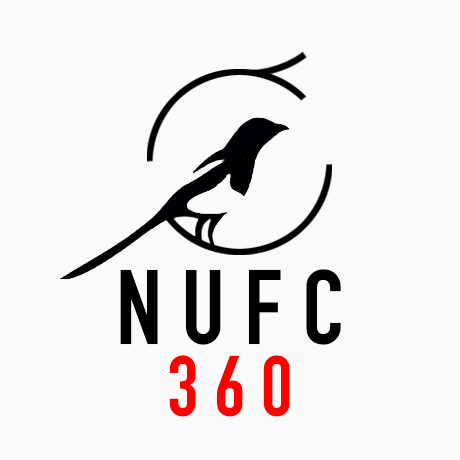RAFA BENITEZ – THE PLAYER
As a player, Rafa Benitez shared the characteristics that still define him to this day. He was a tactically adept, deep-lying midfielder that relied on mind over physicality on many occasions. Having been born in Madrid, he wanted to fulfill his lifelong dream of playing for the Galacticos. Little did he know, he would fulfill that dream in a rather different manner decades later.
Benitez worked his way through the youth ranks and featured for Real Madrid Aficionados in the Tercera Divisíon. By 1979, the Spaniard came to a conclusion: the first team was out of his reach. And so, he joined Castilla CF in the Segunda Divisíon, looking to showcase his ability at a higher level. He was improving. Progress was being made, until a hammer blow was suffered.
As an 18-year-old, Benitez was drafted into the Spain Youth U-19s for the World Student Games in Mexico. It was a good achievement for a man deemed not good enough for the Primera Divisíon. He scored a penalty in a 4-0 win against Cuba; a good start. But the beginning of the end was nearby. During a 0-0 draw with Canada, Benitez suffered a cruel injury to his knee.
“I kept playing for about 15 days. I was waiting for proper treatment and this is the main reason why I had more problems with the knee,” he told BeIN Sports.
Close to one year would be spent on the sidelines, and it was then that the meticulous youngster began to take a keen interest in the tactical side of the game. Upon his return to fitness, Benitez joined Parla, a Spanish third division side and spent four years at the club. He would end his playing career early at Linares, where he spent two years as a player/coach under Enrique Mateos.
A recurrence of the knee problems he endured in Mexico was the catalyst for his decision to retire. In 1986, Rafa Benitez was no longer a footballer; he was an early retiree with one mission – to be a top level football coach.
Enrique Mateos utilised Benitez’s tactical nouse during his tenure at Linares. The potential was there. All that he needed to do was put the work in, and so he did.
LADDER CLIMBING AT REAL MADRID
In the aftermath of his retirement from football, Benitez studied football coaching in depth and when Los Blancos accepted his application to coach there, an unexpected opportunity arose.
“I was expecting to coach a younger team, like under 10 or under 12, but they gave me a position as coach for the under 16 team. I was grateful and surprised at this,” he later said.
A coaching journey that would lead the methodical football-lover to achievements nobody could have ever predicted had begun. His time at the Under-16s was a success. Players progressed, players grew. Benitez’s boyhood club began to take notice.
Madrid is a city that breathes football. The fans of Real Madrid care about more than just the star players of their first-team; Real Madrid Castílla is, and has always been, a well-followed side in the Spanish capital. It is the “reserve team,” but the setup plays an integral role in the progression of La Fabríca, the club’s illustrious youth academy.
They play in Alfredo di Stefano Stadium in front of 12,000 people. Believe it or not, they are a big deal. Usually, RM Castílla’s manager is a former first-team player with coaching qualifications. For Rafa Benitez to be handed full control of the team was a magnificent achievement. He was an unknown quantity, far from a household name. It was a bold move by the Real Madrid hierarchy.
In 1993, Benitez was appointed manager of Real Madrid B. They had narrowly avoided relegation two years previous, finishing 16th in the Segunda Divisíon. And so, a wildcard was thrown into the mix to try and steady the ship. Under Rafa’s tutelage, the young and hungry reserves remained a competitive ensemble, ending the campaign in 6th place.
Finishing 6th in the Segunda Divisíon usually led to a spot in the playoffs, but because Real Madrid B cannot play alongside the first-team in La Liga, that spot went to the team in 7th. The season after, they came 8th and in 1995, when Benitez led a 10-match unbeaten streak, Vicente Del Bosque appointed the then 35-year-old as his assistant manager in the first-team setup.
“We had some very good times working together and the 1993-94 season is maybe the one we remember.
“I don’t think I have known a camaraderie quite like those days and an image I’ve always kept is of a team made up of the Real coaching staff from that time shows how strong those bonds remain,” Benitez told the Telegraph.
The role as assistant was an introduction to the ferocious pressures that come with management for Benitez. He learned from Del Bosque, a man whose calm and comprehensive nature allowed for key information to be understood by his players.
At 35 years of age in 1995, Benitez felt he was well-equipped to successfully tackle the demanding task of first-team management. The eager, young coach jumped at the opportunity to sign for Real Valladolid in the Segunda Divisíon.
SCUPPERED PLANS AT ALBIVIOLETAS
Upon his appointment, Real Valladolid were preparing to play in the second division of Spanish football after the previous season’s relegation. Immediate recruitment plans were put in place by Rafa with the aim of catapulting the club to promotion for the upcoming season.
Five promising youngsters from Real Madrid were brought in. It was a squad capable of challenging for promotion and with a new era about to begin, supporters quickly forgot about the demoralising relegation and became optimistic about the season ahead. However, on the 15th of August 1995, Benitez’s plans were put in limbo when Celta Vigo and Sevilla failed to pay for their La Liga registration.
Both clubs were demoted. Albacete and Real Valladolid, who had just been relegated a few months previous, were reinstated into La Liga. The task ahead became much, much harder. The season started two weeks later and Benitez, with such a lack of experience, found it extremely difficult.
The signings he made were brought in to spearhead a rapid return to Spain’s top flight, not to go through the rough and tumble of a gruelling relegation battle. Benítez went from managing against minnows like Palamós CF and Atletico Marbella to attempting the almost impossible tasks of getting results against global giants FC Barcelona and Real Madrid.
After 23 games, Valladolid had two wins to their name. They were rock bottom of the league and Benítez’s time was up. He was sacked in January, midway through the campaign. It wasn’t the best chapter of the Spaniard’s managerial career, but it remains an important one.
Football management is a learning process. To be successful, you must overcome failure and learn from your errors. This wasn’t a problem for the constantly self-critical Benitez. His past failures helped shape the type of manager he is today.


